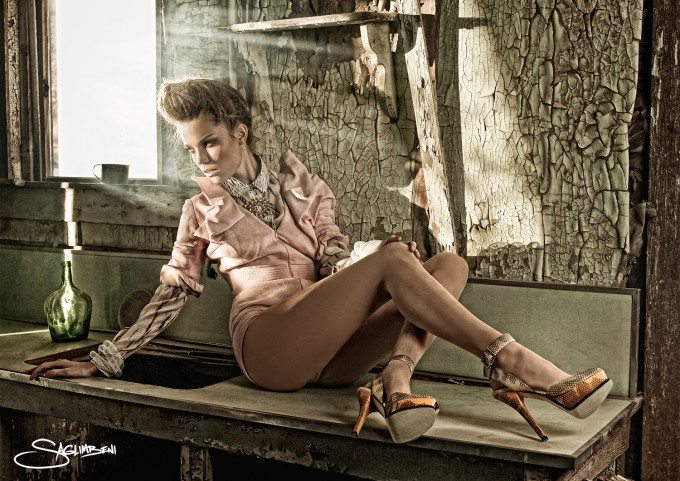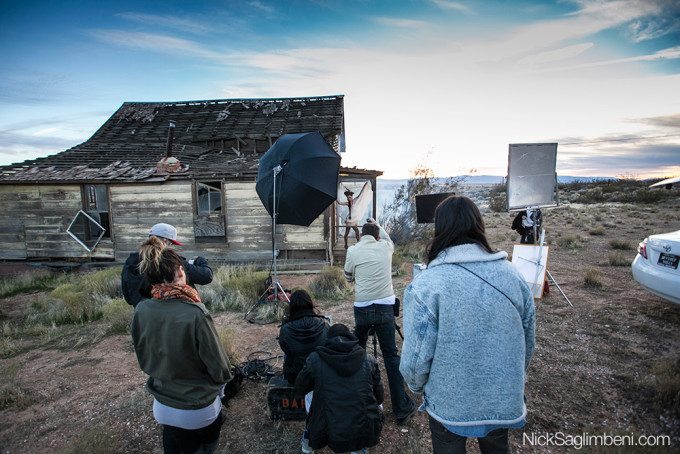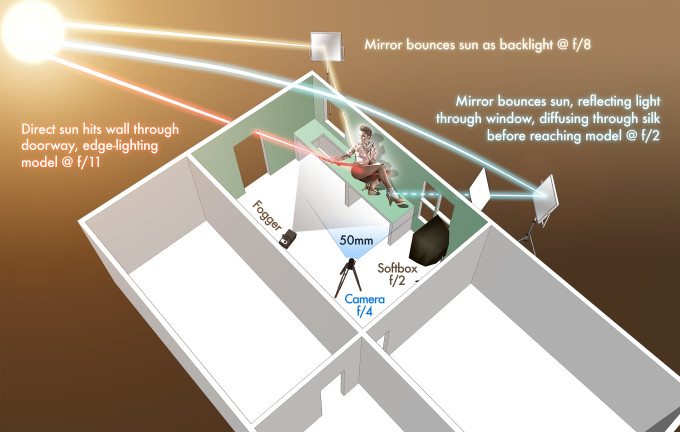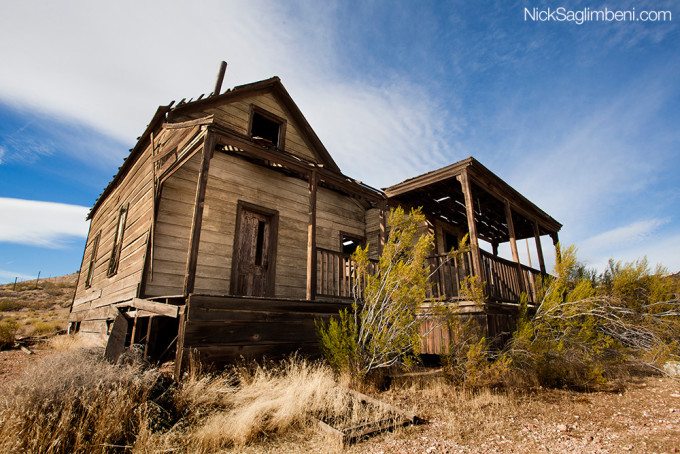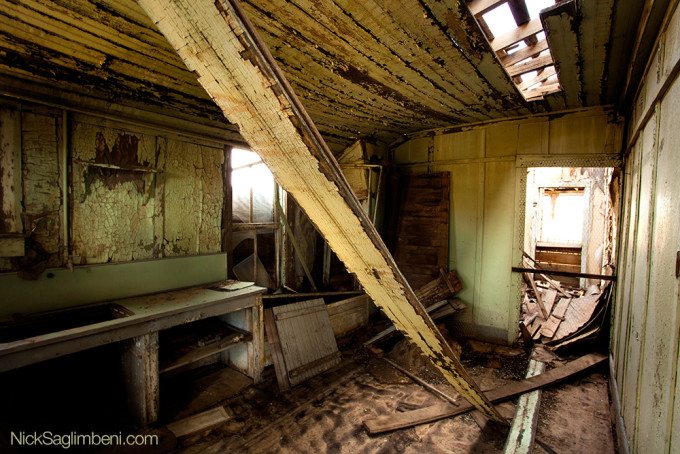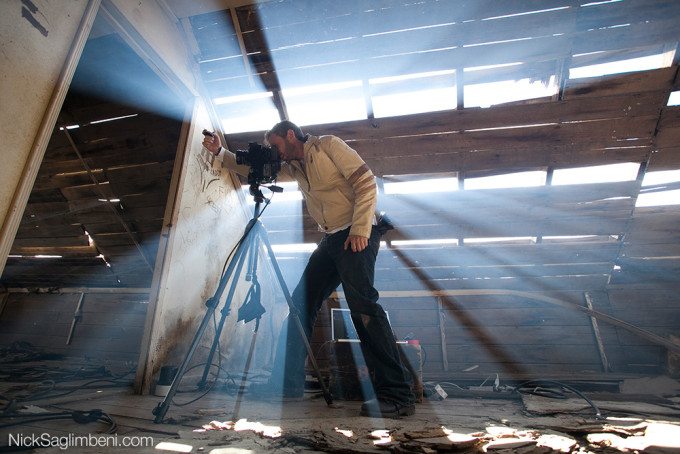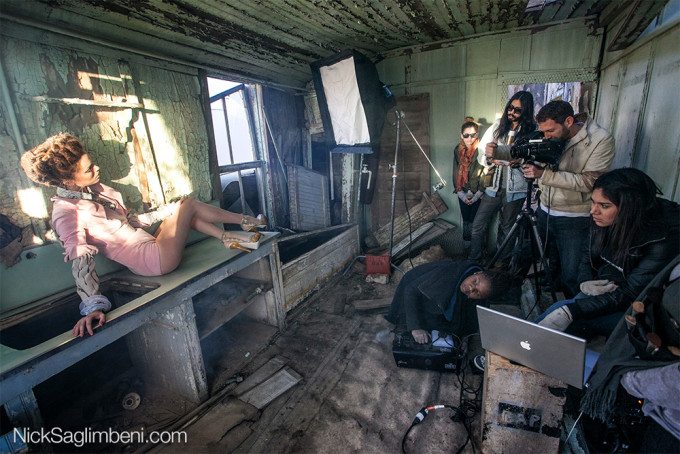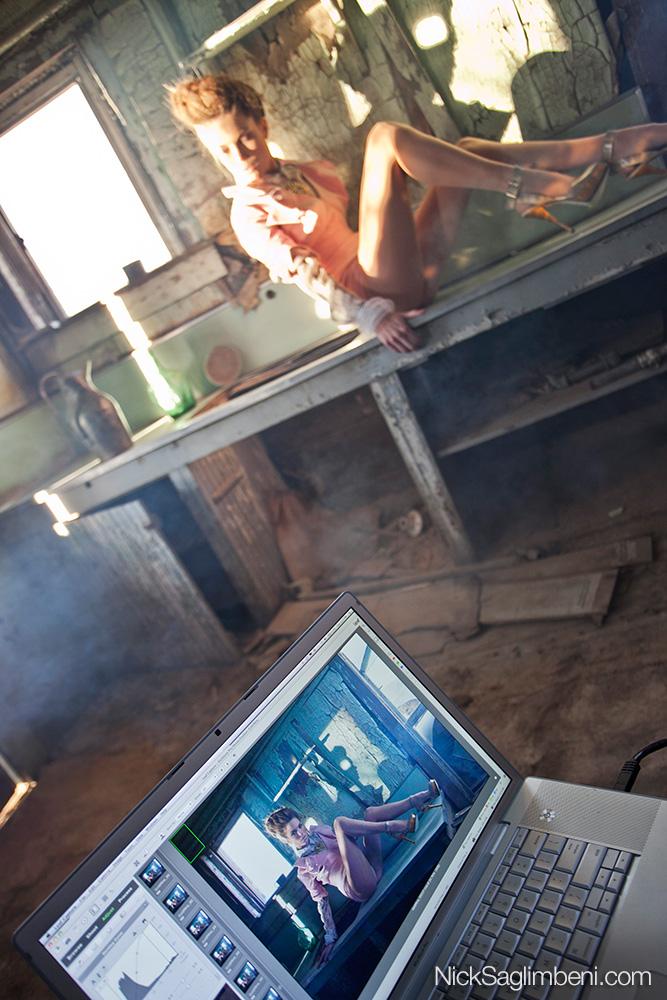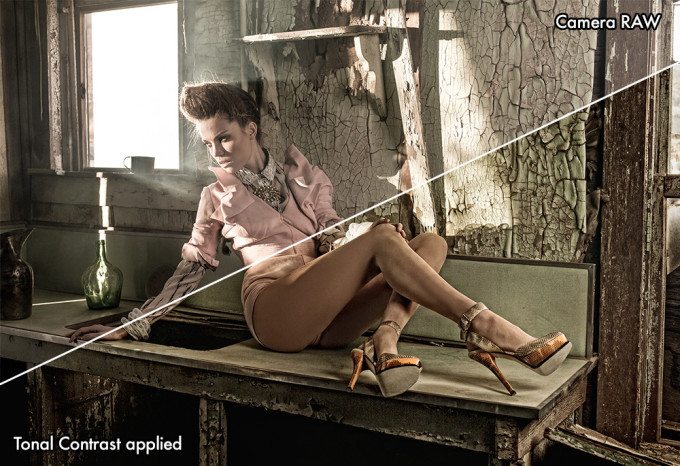Last Updated on 09/24/2015 by Julius Motal
All images by Nick Saglimbeni and Slickforce. Used with permission.
Photographer Nick Saglimbeni moved to Los Angeles to pursue cinematography at the top-ranked USC School of Cinema. Shortly after graduation, Nick opened SlickforceStudio in downtown LA. In December of 2009, after less than 5 years in as a magazine photographer, Nick photographed his 100th magazine cover. That same year, he won the Blackberry Small Business Award for the development of his Mastering Retouching series, which sold out of its initial run in 2010.
Currently, Nick photographs commercial campaigns for companies such as Sears, Skechers, Wacom, Kardashian Kollection, Nuvo and more. His work has been featured on The View, Larry King Live, The Huffington Post, Keeping Up with Kardashians,E! News, The Soup, and countless others. He is heavily involved in the photography of several charity campaigns, including Breast Cancer Charities of America (BCCA), The Epilepsy Foundation, The Humane Society, and People for the Ethical Treatment of Animals (PETA).
He’s also won numerous awards including Grand Prize at the Sony World Photography Awards, 3 NAPP Grand Prizes, and the Champion Award from NVidia.
And today, he’s giving you some insight into how his mind works when it comes to creating awesome photos like the one above.
Editor’s Note: This is a sponsored post from Slickforce. Slickforce is behind lots of inspiring tutorials for photographers and their latest one is called Mastering Lighting. This is a video series where photographer and Slickforce Founder Nick Saglimbeni breaks down and teaches about his creative and technical decisions when it comes to his photo shoots. You’ll learn about everything from the location scouting, sparking inspiration, set up, working with assistants, making the most of very little gear, communicating with models on a shoot, and everything you need to master lighting and “get it right” in the camera to begin with.
Nick goes through quite literally all of this in painstaking details and with visual charts combined with cumulative exercises that build your reasoning when shooting; and we highly suggest that if you want to give lighting a serious try no matter what your skill level, Mastering Lighting is well worth the investment in yourself.
The Concept
Nuclear Summer was photographed for the first issue of World’s Most Beautiful. The publication showcases a wide range of content from celebrities to supercars to world travel, and this was the lead fashion feature. The concept is a runway-model living in the aftermath of the apocalypse—she’s still dressing up to be discovered in Beverly Hills, yet she’s completely oblivious to the fact that the world and all life on it has been completely destroyed. It’s a very happy theme.
The Gear
One important note about the gear: You don’t have to spend a lot of money to create an expensive-looking image. You can see that this image is almost entirely created with sun and mirrors. I use industrial mirrors because they give you more control, but you can achieve a similar effect with $5 mirrors from Home Depot. In Mastering Lighting, we spend a lot of time showing you ways to improvise on location for very little money.
Camera:
Hasselblad 503 CW
Leaf Aptus 22
50mm f/4 Distagon Lens
Lighting:
Two 4’x4’ Mirror Board Reflectors on Junior Combo Stands
One 4×4 Silk
One Profoto Pro7A 2400 Pack with Pro head
Fog Machine
The Shoot
It’s always important to me that the viewer can “feel” the textures in each image. I don’t like how contrived and sterile everything feels in a studio, so location choice is always critical. This editorial was shot at a dilapidated former gold-mining village in Lancaster, California that I just love. It’s been out-of-service for more than 60 years, and everything has a frozen-in-time yet rapidly-aging quality to it. It just screams abandonment. The peeling paint, the rusting metal, the dry-rotting wood, you can’t find a bad angle, and everything is caked in dust. It’s paradise for a photographer.
The rooms in the village are all incredibly small, and this particular scene took place in a small kitchen (the model is sitting on what used to be the sink). The ceiling and floor beams were both collapsing, so it made the already-tiny space even more difficult to work. I scouted the location a few days before the shoot, so I knew there was about a 30-minute window, in the late afternoon, where the sun beamed perfectly through the open door, giving the weathered green paint a beautiful glow. I buried myself in the far corner opposite the kitchen counter and put the 50mm on my Hasselblad—which was just wide enough to fit the model from head-to-toe, even with her long legs.
The sun was moving quickly, and since the doors were all falling off the hinges, we got these wonderful light patterns on the wall that I wanted to capture before they disappeared. I like to direct existing environment light as much as possible before bringing in strobes. Mirrors allow you to duplicate the sun and point it in any direction you wish, giving you unlimited light power with zero electricity required. I positioned two 4×4 mirrors outside the house, redirecting sunlight through the windows: one as a backlight and the other diffused through a 4×4 silk to create soft window light.
I then turned on the fogger to lower the contrast in the scene and give it a pastel palette. It’s very windy in the desert and there were drafts blowing through the room, so it took about 20 minutes to get an even quality to the fog. Working with fog is something that confuses a lot of photographers, so we cover it quite in-depth in Mastering Lighting.
I wanted to feel that this was the end of the world, so I tried to remove as much color as possible through smoke and wardrobe, leaving the viewer to focus on the stillness of the model and the house falling apart around her. This setup became my base exposure, which gave me strong but healthy highlights and still a fair amount of shadow detail at F4 (wide open on the 50mm) at ISO 100 at 1/60 sec.
Our model Therese Fischer was fantastic, she could hold her poses indefinitely like a gargoyle in cement, which allowed me to get away with the slower shutter speeds. I love letting as much natural light as possible burn into the frame, so I typically shoot slow shutters on a tripod—and in this case also firing my camera by remote—to avoid motion blur.
Post-Production
During my tests, I felt the shadows from the sun and back mirror were a bit too harsh, so I added a soft fill from the window side of camera using a small softbox, it registered barely an F2 and just softened Therese’s face a bit. I got very close to what I wanted for the scene in-camera, so we didn’t do too much post. I added a bit of Tonal Contrast from Nik Color Effects to draw attention to the wall textures.
This continues to be one of my favorite fashion shoots, and its one that I get asked about a lot. Artists always have a soft-spot for a pretty girl and the apocalypse.
Credits:
Model – Therese Fischer
Stylist – Monica Rose
Makeup – Gaby Ramos
Hair – Ashlee Rose Clay


